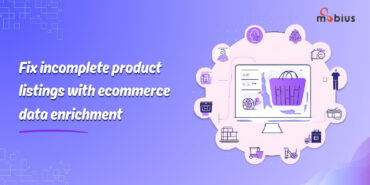Product pricing is one of the most salient aspects of managing a business. For ecommerce, where customers can easily compare product prices, the task of optimally pricing products in real time becomes crucial. But ecommerce pricing is a significant challenge for online retailers, sellers, and marketplaces due to the risks involved.
If ecommerce players price their products too high, the customers will purchase from a different seller. If online retailers price their products too low, it would be linked to degraded quality, and the business could lose its value and identity.
The bottom line is that ecommerce players must balance both extremes and price their products in a way that beats the competition and attracts customers while driving profits. Now, you may think how that is possible. Today, many retailers use competitor price monitoring to price their products dynamically and stay competitive.
Through this blog, we will understand pricing intelligence and its importance in ecommerce.
What is pricing intelligence?
Pricing intelligence involves tracking, monitoring, and analyzing competitor product pricing data to set the right product prices. Responding to continuous price changes helps ecommerce players stay more competitive and improve their sales.
Moreover, pricing intelligence helps online sellers get a comprehensive picture of competitors by tapping into their price nuances and strategies. It lets you drill down to the micro level, providing insights into the strengths and weaknesses of competitors selling identical products.

Price intelligence also includes tracking and monitoring promotions, seasonal offers, deals, and discounts on competitor sites. You can get detailed information about when competitors offer deals and discounts, the product categories for which discounts are offered, the seasons, the duration, and more.
Since these price and offer changes occur frequently, manual competitor price monitoring isn’t easy to make the repricing decisions in time. A minor delay in price change can cost ecommerce sellers a great deal as they can lose out on potential buyers because they don’t offer the best competitive price. To eliminate these business risks, online sellers can automate price matching through price intelligence.
How does pricing intelligence work?
There are multiple steps involved in pricing intelligence that enable online sellers to have a deeper insight into competitor price monitoring, identification of product gaps, and more.
1. Identifying direct competitors
Price intelligence starts with exact competitor identification for price monitoring. You must first identify competitors who sell the same or similar products and the platforms they sell on. Knowing your direct competitors and where they sell in detail will help you develop an appropriate strategy to attract more customers.
2. Accurate product matching
As an online retailer, you must find and track competitors selling similar products as you. Through price intelligence, you can accurately match products across categories on different websites to quickly identify what level of competitive risks they pose. You can enable automated price matching using powerful product-matching algorithms.
3. Analytics and reporting
Price intelligence is so important because it allows retailers to save time and resources while driving real-time price changes. You can get all the granular information on competitors, products, and consumer behavior through detailed reports and custom dashboards.
Set the right product prices
Save time and resources as we guide your every pricing move with real-time data. We can help you implement price tracking for your business to enable a bird’s eye view of your competitor’s pricing strategies, market trends, and customer behavior.
Why is price intelligence important for ecommerce?
Data has become a buzzword in every industry in recent years, and the ecommerce industry is no exception. Ecommerce giants have been relying on big data for a long time, which has helped these companies grow exponentially.
One such example is Amazon. Amazon uses data to drive decision-making. For example, on Amazon, product prices change 2.5 million times daily based on customer website activity, competitor site pricing, item preference, availability, order history, and many other factors. Amazon’s pricing strategy is beautifully designed and never fails to attract customers because they offer discounts on the best-selling products while earning profits from less popular products.
As a retailer, you can use price intelligence to better price your products and get insights into the following aspects of your online business.
1. Competitor benchmarking
In a highly competitive industry such as ecommerce, businesses need to know their competitors, their operations, and their pricing strategy to stay ahead. Competitor price monitoring will enable you to develop an effective price intelligence strategy, even if it is not for the same product. The competitor information will help you establish the best product pricing, unlocking more profit opportunities.
As explained above, the first step is the identification of exact and indirect competitors, followed by exact product matching, similar product matching, and customer responses to the price changes. By automating this process using price intelligence, you can effortlessly offer the most attractive deals on products for any region.
2. Identifying product gaps
Learning and bridging the gap between your product offerings and what your competitors offer is crucial. For example, you are a retailer in the fashion and apparel category just like your competitors, but they have a sub-category for luxury wear that is missing from your catalog. Needless to say, it would be a missed opportunity for you not to have a similar product category.
Here, competitive price intelligence lets you identify product gaps on category, sub-category, and product-level, creating more profit avenues.
3. Analyzing stock availability
Although pricing is the most significant factor in customer decision-making, other factors might affect your sales. One such factor is stock availability.
If, as a retailer, your products are often “out of stock,” it will start reflecting on your market positioning. To be a successful retailer, not only should your product prices be the most competitive, but you should also ensure that you replenish your stocks well in advance.
Imagine a customer is looking for ankle boots that you offer at the lowest price among all your competitors. But, when the customer proceeds to buy the shoes, they find the product to be out of stock. Here, the fact that you offered the best price on the product would not matter simply because the product was unavailable and the customer could not buy it. Therefore, knowing when you are running out of certain products that are top-selling and timely replenishing stock can lead to increased revenue growth.
4. Monitoring minimum advertised price (MAP)
MAP monitoring is crucial for brands to monitor product prices across multiple ecommerce platforms to identify price fluctuations. Monitoring resellers and retailers in real-time across channels matters because product prices can directly affect your brand reputation. The minimum advertised price is the lowest price set for a product by the manufacturer or a brand at which retailers sell the product.
For example, if a manufacturer produces bowls and sets the minimum price at $20. Retailers or retailers who want to sell these bowls should agree to sell them for at least $20. If retailers fail to adhere to the MAP policy, they will be in violation. Any inconsistency in product prices can harm the brand’s reputation and should be tracked for effective enforcement of MAP policies.
Develop an effective retail price intelligence strategy
As an ecommerce player, if you are not fast enough in your decision-making, you might lose out on potential revenue growth opportunities. A powerful price monitoring solution can help you streamline your decision-making process concerning and develop better pricing strategies that ensure a spike in sales and revenue.
Implementing a dynamic pricing strategy that you can tailor based on the latest competitor insights will allow you to manage your price position in the most competitive ecommerce markets. Explore our pricing intelligence solution and learn how we can offer you a solid competitive advantage through price, product gap, and MAP monitoring.
Reach out to our ecommerce experts with your queries and get an instant response.
Read AI-generated summary
- The bottom line is that ecommerce players must balance both extremes and price their products in a way that beats the competition and attracts customers while driving profits.
- A minor delay in price change can cost ecommerce sellers a great deal as they can lose out on potential buyers because they don’t offer the best competitive price.
- There are multiple steps involved in pricing intelligence that enable online sellers to have a deeper insight into competitor price monitoring, identification of product gaps, and more.
- We can help you implement price tracking for your business to enable a bird’s eye view of your competitor’s pricing strategies, market trends, and customer behavior.
- Data has become a buzzword in every industry in recent years, and the ecommerce industry is no exception.







2 Comments
Hello Shruti Rajput, Its really great content. It is very helpful to understand pricing intelligence helps to retailers and manufacturers. Pricing strategy can help to make better decisions.
Nice article Shruti Rajput. The article provides a clear and concise explanation of the benefits of pricing intelligence for e-commerce businesses, including increased competitiveness, profitability, and customer loyalty. The examples and best practices shared in the article make it easy to understand how pricing intelligence can help e-commerce businesses make informed decisions about pricing and promotions. Overall, a valuable resource for e-commerce businesses looking to stay ahead in today’s competitive market.